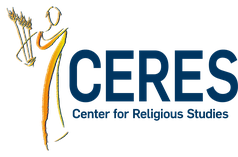Diaspora-Hinduism 2.0
Cultural memory and transformation processes of 2nd generation Srilankan Hindus

Starting Point
"Home country: Germany feat. Sri Lanka". With this ascription many Tamils who were born and grew up in Germany take a third space stand in their individual virtual facebook profiles. They belong to the following generation of almost one million Sri Lankan people who escaped the civil war between the Sinhalese military and the Liberation Tigers of Tamil Eelam (LTTE) since the late 1970s. In 2011 the Srilankan diaspora spanned 55.000 people with a demographic concentration on North Rhine-Westphalia, which is a highly plural federal state regarding religion. In three decades Tami Hindus established around 34 temples. With their multifunctional aspects they form a multisided temple culture and a space for culture-spanning encounters, especially for North Rhine-Westphalia. One of the first generations` central challenges is to transfer religious contents, traditions and values to the second generation. But the young Hindus were socialized in Germany and because of an upward mobility and youth cultural needs seem aloof from their parent beliefs. The Tamil diaspora Hinduism has only been analyzed partially in studies on migration and religion. An academic basis has been compiled with the book “Tempel und Tamilen in zweiter Heimat”, that has investigated aspects of the Tamil Hindu culture in the diaspora in heterogeneous, ethnographic studies (Baumann/ Luchesi/ Wilke 2003). It has only been worked on the second generation in Germany peripherally, network analytical aspects have not been considered yet.
Question
In the dissertation I will explore patterns of the collective, cultural memory (Assmann 1992) of 2nd generation Tamil Hindus In NRW. With reference to religious studies, spaces of migrant self-organization (temples, Tamil schools, internet, peer-groups etc.) therefore are investigated as main context factors for the construction of a religious identity. Following a network analytical approach, the social and institutional embedding of the interviewees is reflected. Thus a connection between the individual and the network level is established. The main question is: How is religion transmitted to the 2nd generation and what does it mean for collective identity discourses of the young Hindus? The institutional landscape that is investigated therefore will be divided into different levels. Next to the changes of religious institutions arranged by the first generation (induced by generation-spanning changes of needs) the religious and national self organization of young Tamils in peer-groups is investigated as well. Which modes of aggregating specific interests and needs are mounted by the 2nd generation? Which modes of civil social engagement exists? And altogether, does religion still work as a identity resource like it did for the 1st generation?
Method
The conjunction of the micro and meso level (qualitative network analysis) and investigating transformation processes of the temples are realized in an plural survey design. The systematic evaluation follows the Grounded Theory (after Strauss) and the Documentary Method. Around 25 biographic, semi-structured interviews with young Hindus are conducted, requesting the religious self-understanding, parents religiosity and other relevant context factors (individual migration background, myths of return and the imagination of a diasporic imagined community (Brah 1996)). Furthermore temple priests are interviewed and specifically asked for their perspective on inter-generational changes and a future outlook of the temples. The institutional level is also investigated by participant observation in temples, Tamil schools and various occasions like religious fests, political demonstrations and sport festivals. In order to receive information on the social and institutional embedding, I will perform an ego-centered network analysis. The most important persons of reference are inquired, to reconstruct the social environment of the interviewees and thereby to make expediency-structures of migrant self-organization visible.

